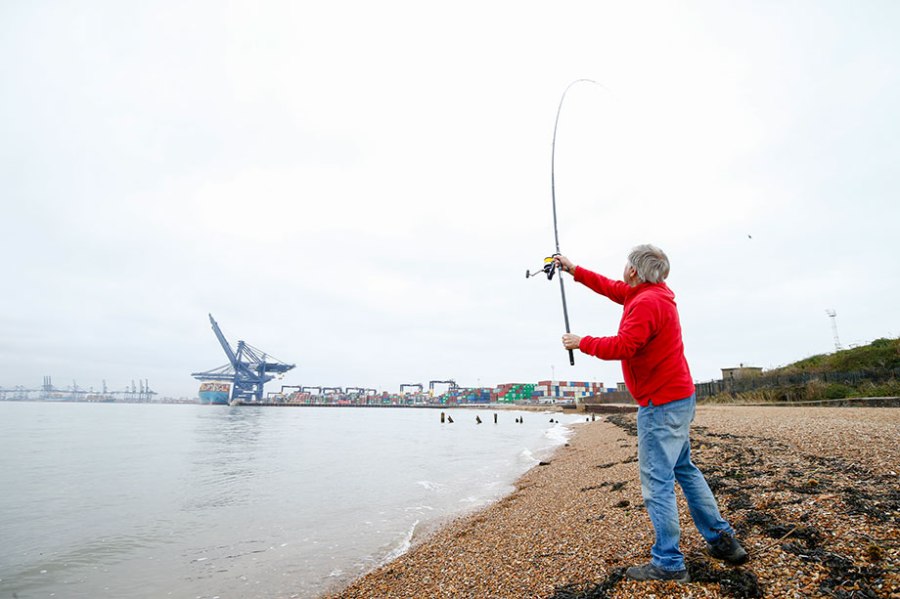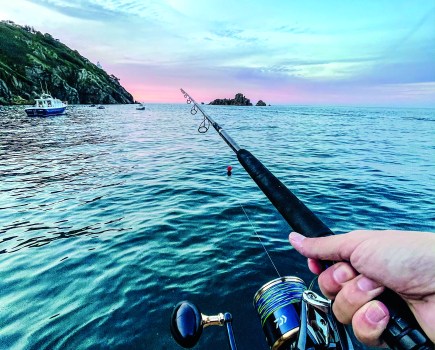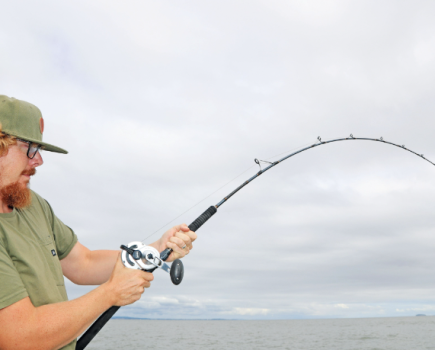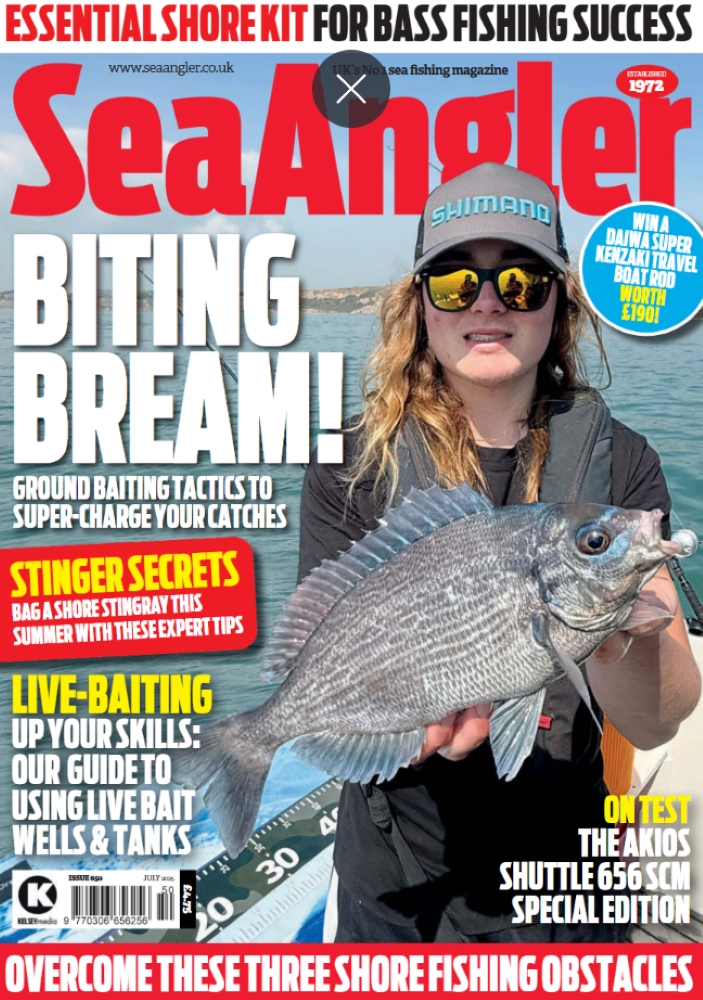An effortless response to overhead casting should win this new clean ground rod – the Tronixpro Competition Performance – many friends, but it won’t suit everyone
Words: John Holden
Photography: Lloyd Rogers
Tronixpro Competition Performance
RRP: £399.99
Well, the bag is quite impressive. Knitted mesh material, Velcro fastener, comfortable padding. Unlike the typical cheesy rod bag, this one is also smartly embroidered with Tronixpro Competition Performance. If first impressions count, we’re off to a good start.
The rod is three-piece, each section tucked safely in its own partition. Plugged together they make a 4.2 metres (13ft 9in) beach rod that weighs a tad over 480g, featherweight even by modern standards. There is also a 4.5m version. And it’s slim. The 23mm diameter butt tapers to 21mm at the reel seat, the mid-section goes from 17mm to 15mm, the very tip shrinks to a minuscule 1.92mm – and that’s measured on top of a generous layer of reflective finish.
According to Tronixpro, the blank is made from a mix of premium Japanese carbon. The noticeable stiffness is probably exaggerated a little by the rod’s low weight and slimness but be in no doubt that this pole is meatier than it looks almost all the way up to the tip.
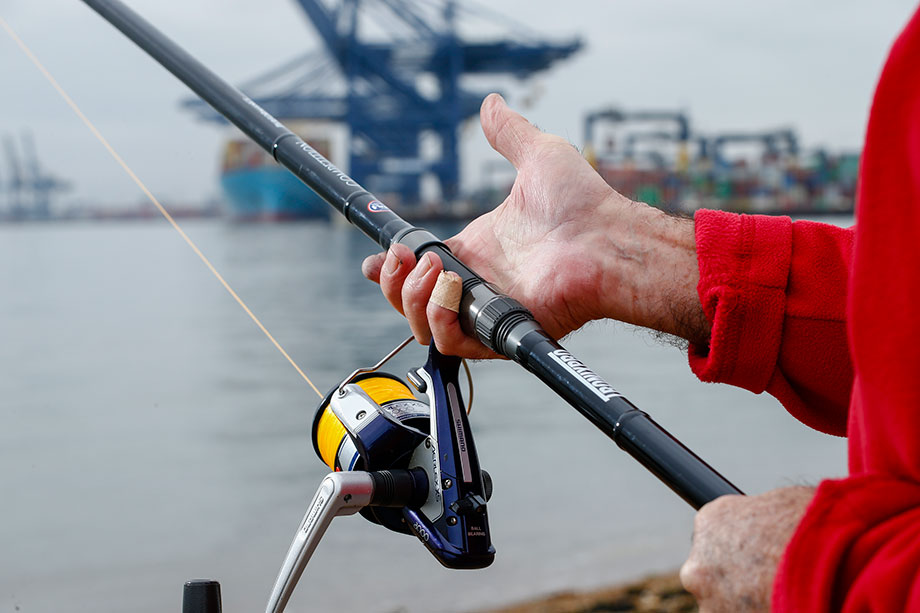
FEATURES
Blank aside, the Competition Performance is conventional in a minimalist way. The fixed reel seat is Fuji, as are the rings. The bottom six are KWAGs grading down from a 20mm ring at the butt. For clarity given the wide variation in ring specifications, I measure ring bore rather than maker’s stated size. The top two side rings are single-legged.
The plug-in joints are excellent, the female end reinforced with a metal band, the male side backed by a short section of textured rubbery stuff to provide extra grip for wet fingers. The butt grip is textured and rubbery too, but why, oh why are there no grips either side of the reel seat? Fair enough, this being a fixed-spool rod our hand will be on the seat when we’re casting. But it’s necessary to hold a rod above the seat for cranking in. A proper grip isn’t too much to expect, especially on a £400 rod. I wound on a few turns of rubber tape for better feel, more security and to protect the blank. For although the glossy black finish is pristine straight out of the bag, it can scuff.
A flexible tip is great for bite detection and a good many other things. Some manufacturers get that flexibility with special glass, in which case the tip will probably be about the same diameter as on lesser beach rods. Others take the low diameter route using carbon, as Tronixpro has done. Both ways work. The important factor is how that flexible tip marries up to the rest of the blank. This is where things get complicated, so I won’t go there except to make one point that needs careful consideration.
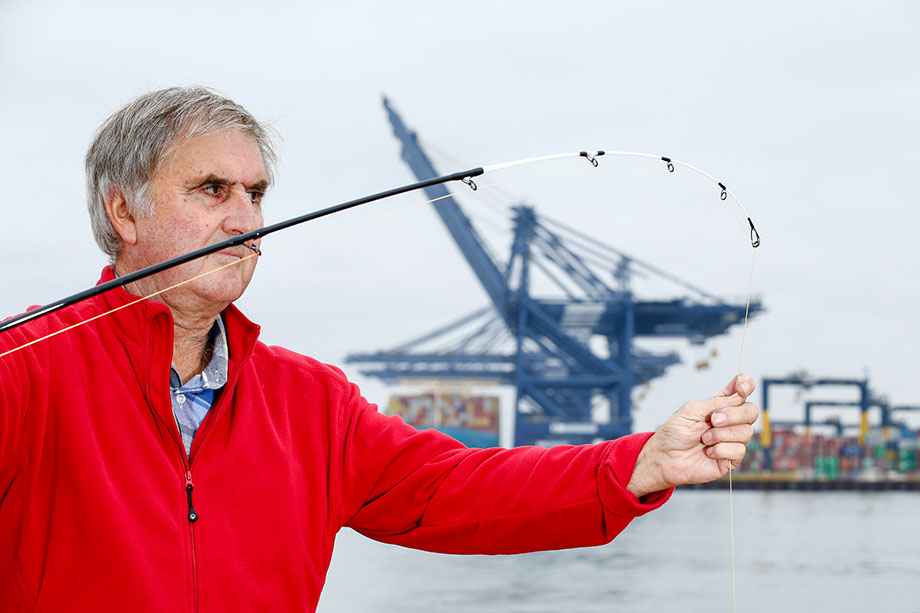
CASTING STYLE
How a tip and the rest of the rod are designed determines, among other things, which casting styles do best or even work at all. Some of these rods are aimed at pendulum work, some for off-ground styles, some for overhead casting. The majority are fairly fussy in this respect, so it’s essential to pick the rod that suits you, and ideally to try before buying.
In my view, the Competition Performance is not a good pendulum rod, nor will it suit some off-ground methods such as the Brighton style that create strong, early resistance. I have no reason to question the tip’s durability. The issue is that the rod just doesn’t load and release how I want it to with those particular casts. Others may find it perfectly fine. Overhead style and simple off-ground styles? Great casts, lovely feel, all things bright and beautiful.
Powered by the overhead cast that’s become so popular with long fixed-spool rods, the Competition Performance is in its element, coming alive and easily throwing farther than generally necessary. Setting up with the rod held high and the leader drop such that the sinker hovers just above the ground, I needed no more than a smooth pull down with my left hand. The rod did the rest. Powered this way, the blank action that put me off pendulum now produces smooth compression, clean release and an effortless, towering trajectory. Laying the sinker on the beach directly away from the tip ring, then using the same left hand pull gave the same crisp flow plus a little more yardage.
Tronixpro claims a weight range of 100-190g with an optimum of 120-150g. The spot-on sinker for me turned out to be 125g in combination with 0.30mm mono mainline and appropriate shockleader. Since I would only use this rod for clean beach work in decent conditions, 30-35lb would do well. Heavier loads, different mainline and rough weather would call for a rethink. Your mileage may vary.
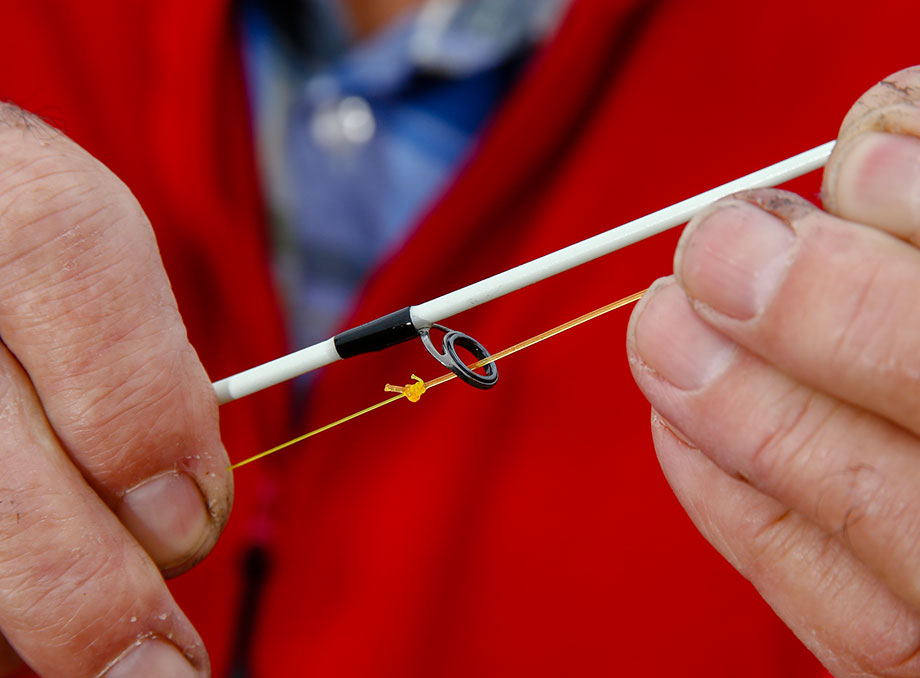
WEED ISSUE
Who on earth came up with the decision to top out a beach rod with 6mm bore side rings and a minuscule 5.5mm bore tip ring? This is an extraordinary choice for two clear reasons. First off, every angler that ever chucked baits from the beach knows perfectly well that now and again, and sometimes every cast, bits of weed stick to the line and especially to the leader knot. Most beach rod ringing takes this into account in order to minimise the nuisance, so that all but the biggest chunks can be wound down to the reel and cleaned off there rather than you having to do the spring cleaning at the tip.
One of my test sessions was plagued by that grassy stuff with magnetic attraction to fishing line. Time after time the tip ring clogged solid with clumps no bigger than an aspirin – bad news with a decent fish on the line. Then there’s casting. This is probably the first time in a very long career that a rod has dictated which leader I should use. A standard overhand/uni leader knot tied in 35lb line just about runs cleanly. With 50lb mono, the knot is on the limit for clean passage. You know what happens should a beefy cast wrap the leader knot around the tip ring or the next few below it. Bye-bye ring…. or worse. Tapered leaders are a wise option on this rod; mandatory, perhaps.
THE VERDICT
Overall, though, the Tronixpro Competition Performance came across as an enjoyable, competent rod for the lighter end of clean ground work using fixed-spool reels and reasonably light lines. Though I preferred the 125g set-up, it is equally competent with 150g or even a bit more lead weight. Bite detection is in the premier league and the tip sits well in the tide, which is often as important as detection itself. The rod seems to magnify every little twitch, so that you can feel what the seabed is like as the rig comes back. Little fish felt bigger than they turned out to be.
Build niggles aside, this is a better than average rod in blank engineering, handling and performance. Unlike so many fairly specialist rods it makes no great demands on the user. Its effortless response to a simple overhead casting method alone should win many friends. But that fairly unusual combination of bendy tip and significant lower stiffness won’t suit everybody. Call it the Marmite factor.
SPECIFICATIONS
Tronixpro Competition Performance
Sections: Two
Length: 4.2 metres
Rating: 100-190g
Blank: 46T & 40T carbon
Guides: Fuji KWAG and single leg
Reel seat: Fuji DPS
Tip: Reflective
Weight: 480g
Price: £399.99
For more information, visit: tronixfishing.com

